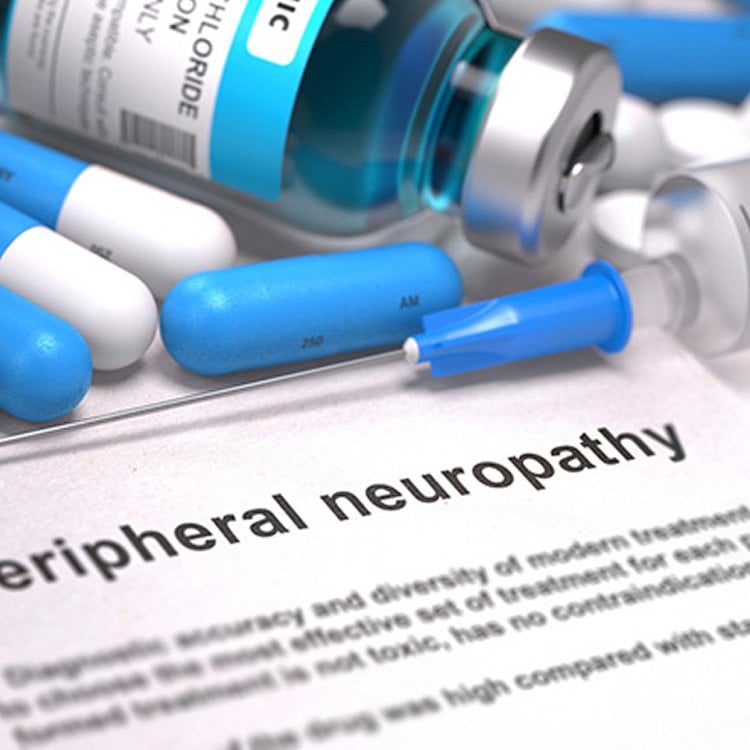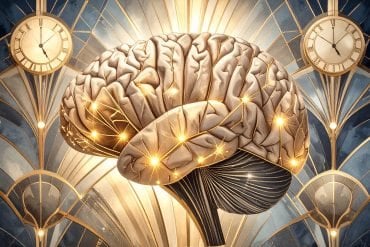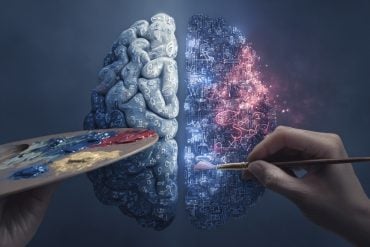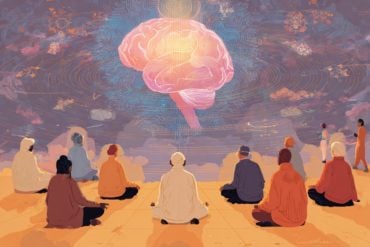Summary: New findings suggest neuropathic pain could be prevented.
Source: Rutgers.
Rutgers scientists say research indicates that the chronic condition could be prevented.
Neuropathic pain – which affects more than 1 million Americans – could be reduced or even eliminated by targeting brain cells that are supposed to provide immunity but, in some instances, do the opposite, causing chronic pain that could last a lifetime.
“The general thought has been that these cells are supposed to be beneficial in the nervous system under normal conditions” said Long-Jun Wu, a professor of cell biology and neuroscience at Rutgers University. “But, in fact, in those with this neuropathic pain the cells, known as microglia, have proliferated and instead become toxic.”
In new research, published in both Nature Communications and Cell Reports, Wu and his team discovered that chronic neuropathic pain – caused by nerve damage as a result of an injury, surgery or a debilitating disease like diabetes or cancer – could be greatly reduced in animals if the injury was treated by targeting microglia within a few days.
“If we can catch that window within one to five days to inhibit microglia after nerve injury, we can partially reverse the development of chronic pain,” said Wu. “If we were able to deplete the microglia cells causing the condition before nerve injury occurs, we can permanently prevent it.”

Neuropathy occurs when nerves are injured from trauma or disease and can also be the result of a surgical procedure. This type of pain, unlike physiological pain, persists even after the injured nerve has healed and is often resistant to pain relievers like acetaminophen and naproxen. While opiates are used to alleviate pain, they have side effects and are not always effective for neuropathic pain patients.
In laboratory studies on mice, Wu and his colleagues used chemotherapy drugs to prohibit the microglia brain immune cells from proliferating, similar to the treatment used by oncologists to prevent cancer cells from multiplying. The results from Wu’s laboratory showed that this chemotherapy drug reduced the amount of pain the mice experienced after the injury occurred.
“What needs to be done is prevent the microglia cells from multiplying in the first place,” said Wu. “It had been thought that these cells were beneficial in a normal brain, but our research discovered how these cells function under neuropathic pain condition and initiate the problem.”
Although scientists have studied microglia cells in relationship to neuropathic pain for the past two decades, Rutgers is the first to pinpoint the exact role the cells have in the initiation and maintenance of the condition. Wu and his colleagues found that the proliferation of these types of cells is one of the major contributors of microglial pain. This discovery could lead to the development of more effective painkillers with fewer side effects, he said.
“Our research raises the intriguing possibility that minimizing microglial proliferation may be a novel approach for pain control,” Wu said. “We hope this will eventually lead to more effective pain killers that will battle this devastating disease.”
Scientists who collaborated with Wu included Wise Young, Rutgers professor in the Department of Cell Biology and Neuroscience, Emanuel DiCicco-Bloom, professor at Robert Wood Johnson Medical School, Rutgers postdoctoral researchers Jiyun Peng and scientists Nan Gu, Wen-biao Gan, New York University and Hailong Dong, Fourth Military Medical University in China.
Source: Robin Lally – Rutgers
Image Source: This NeuroscienceNews.com image is adapted from the Rutgers press release.
Original Research: Full open access research for “Microglia and monocytes synergistically promote the transition from acute to chronic pain after nerve injury” by Jiyun Peng, Nan Gu, Lijun Zhou, Ukpong B Eyo, Madhuvika Murugan, Wen-Biao Gan & Long-Jun Wu in Nature Communications. Published online June 28 2016 doi:10.1038/ncomms12029
Full open access research for “Spinal Microgliosis Due to Resident Microglial Proliferation Is Required for Pain Hypersensitivity after Peripheral Nerve Injury” by Nan Gu, Jiyun Peng, Madhuvika Murugan, Xi Wang, Ukpong B. Eyo, Dongming Sun, Yi Ren, Emanuel DiCicco-Bloom, Wise Young, Hailong Dong, and Long-Jun Wu in Cell Reports. Published online July 19 2016 doi:10.1016/j.celrep.2016.06.018
[cbtabs][cbtab title=”MLA”]Rutgers. “Targeting Brain Cells to Alleviate Neuropathic Pain.” NeuroscienceNews. NeuroscienceNews, 8 August 2016.
<https://neurosciencenews.com/neuropathic-pain-prevention-4803/>.[/cbtab][cbtab title=”APA”]Rutgers. (2016, August 8). Targeting Brain Cells to Alleviate Neuropathic Pain. NeuroscienceNew. Retrieved August 8, 2016 from https://neurosciencenews.com/neuropathic-pain-prevention-4803/[/cbtab][cbtab title=”Chicago”]Rutgers. “Targeting Brain Cells to Alleviate Neuropathic Pain.” https://neurosciencenews.com/neuropathic-pain-prevention-4803/ (accessed August 8, 2016).[/cbtab][/cbtabs]
Abstract
Microglia and monocytes synergistically promote the transition from acute to chronic pain after nerve injury
Microglia and peripheral monocytes contribute to hypersensitivity in rodent models of neuropathic pain. However, the precise respective function of microglia and peripheral monocytes has not been investigated in these models. To address this question, here we combined transgenic mice and pharmacological tools to specifically and temporally control the depletion of microglia and monocytes in a mouse model of spinal nerve transection (SNT). We found that although microglia and monocytes are required during the initiation of mechanical allodynia or thermal hyperalgesia, these cells may not be as important for the maintenance of hypersensitivity. Moreover, we demonstrated that either resident microglia or peripheral monocytes are sufficient in gating neuropathic pain after SNT. We propose that resident microglia and peripheral monocytes act synergistically to initiate hypersensitivity and promote the transition from acute to chronic pain after peripheral nerve injury.
“Microglia and monocytes synergistically promote the transition from acute to chronic pain after nerve injury” by Jiyun Peng, Nan Gu, Lijun Zhou, Ukpong B Eyo, Madhuvika Murugan, Wen-Biao Gan & Long-Jun Wu in Nature Communications. Published online June 28 2016 doi:10.1038/ncomms12029
Abstract
Spinal Microgliosis Due to Resident Microglial Proliferation Is Required for Pain Hypersensitivity after Peripheral Nerve Injury
Peripheral nerve injury causes neuropathic pain accompanied by remarkable microgliosis in the spinal cord dorsal horn. However, it is still debated whether infiltrated monocytes contribute to injury-induced expansion of the microglial population. Here, we found that spinal microgliosis predominantly results from local proliferation of resident microglia but not from infiltrating monocytes after spinal nerve transection (SNT) by using two genetic mouse models (CCR2RFP/+:CX3CR1GFP/+ and CX3CR1creER/+:R26tdTomato/+ mice) as well as specific staining of microglia and macrophages. Pharmacological inhibition of SNT-induced microglial proliferation correlated with attenuated neuropathic pain hypersensitivities. Microglial proliferation is partially controlled by purinergic and fractalkine signaling, as CX3CR1−/− and P2Y12−/− mice show reduced spinal microglial proliferation and neuropathic pain. These results suggest that local microglial proliferation is the sole source of spinal microgliosis, which represents a potential therapeutic target for neuropathic pain management.
“Spinal Microgliosis Due to Resident Microglial Proliferation Is Required for Pain Hypersensitivity after Peripheral Nerve Injury” by Nan Gu, Jiyun Peng, Madhuvika Murugan, Xi Wang, Ukpong B. Eyo, Dongming Sun, Yi Ren, Emanuel DiCicco-Bloom, Wise Young, Hailong Dong, and Long-Jun Wu in Cell Reports. Published online July 19 2016 doi:10.1016/j.celrep.2016.06.018







